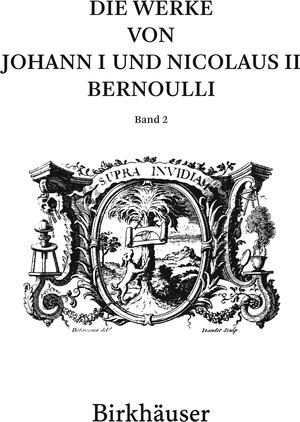
Die Werke von Johann I und Nicolaus II Bernoulli
Band 2: Mathematik II
von Johann I Bernoulli und Nicolaus II Bernoulli, herausgegeben von Enrico Giusti und Clara Silvia RoeroThis volume contains 17 mathematical works by Johann Bernoulli, written between 1680 – when he was only 13 years old and studied mathematics with his brother Jacob – and 1732, when he was 65 years old.
Five of the works are handwritten manuscripts, and another three belong to the Anekdota, which he published in the fourth volume of his Opera Omnia.
The book features also seven works by other authors: John Craig, Jacob Hermann, Gottfried Wilhelm Leibniz, and Ehrenfried Walther von Tschirnhaus. Another work included in this book was co-written by Johann Bernoulli and Samuel Klingenstjerna.
The texts presented here are divided into two parts: the first consists of a substantial untitled paper (Ms. 27) that contains, in a sequence numbered by the author, 120 propositions on various subjects that Bernoulli explored over a very long period of time, namely from 1685 to the first decades of the 18th century. In turn, the second part is composed of a series of articles and manuscripts devoted to problems on the rectification and transformation of curves, on geodesics, and on spherical epicycloids.
In addition to information on the rapid advances in mathematics during this period, the volume also shares fascinating insights into the connections between the mathematicians.


